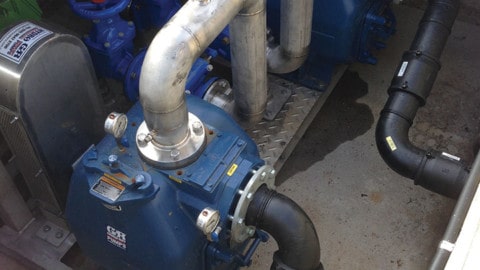Seqwater will preserve a heritage-listed building at Brisbane’s Mt Crosby East Bank Pump Station by stabilising a rock wall at the front of the pump station site.
The office building and workshop, which was constructed in the early 1920s, sits below the rock wall at the front of the pump station site.
Seqwater Chief Executive Officer, Peter Dennis, said a geotechnical survey last year had identified the need to stabilise the rock wall.
“We’ll be undertaking remediation work, beginning with the removal of loose rocks and vegetation on the slope and the installation of a series of rock dowels. We will then apply mesh and shotcrete to the wall, which is concrete projected onto the wall surface at a high velocity,” Mr Dennis said.
“We will also install strip filter drains and weep holes for drainage and build a spoon drain to divert water away from the wall to prevent future erosion.”
Mt Crosby Historical Society has contributed to the project through ongoing work to preserve and promote the history of the Mt Crosby East Bank Pump Station.
“Given their intimate knowledge of the site, we liaised with the society on engineering and aesthetic matters,” Mr Dennis said.
“This project is helping to preserve an important part of our region’s water history so we are very grateful to the Mt Crosby Historical Society for their input.”
Mt Crosby Historical Society President, Colin Hester, said the heritage-listed building at the pump station was once a formal office for the engineer on site.
“The workshop also contained a steam turbine generator at one point. These days the society operates out of the building on a community lease,” Mr Hester said.
“We recommended that the shotcrete applied to the rock wall be a dark blue colour to best match the existing blue metal rock and allow this historical brick building to shine in its own right.
“The project is a demonstration of the commitment Seqwater has to our region’s history at the pump station.”














